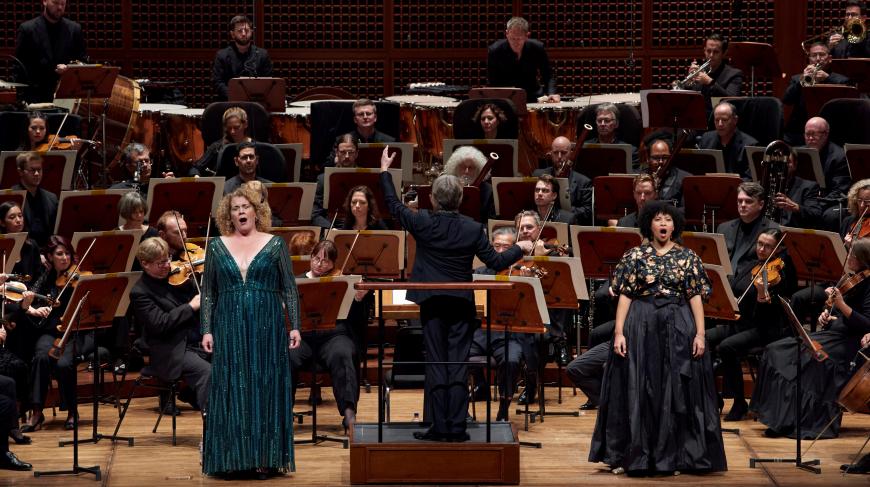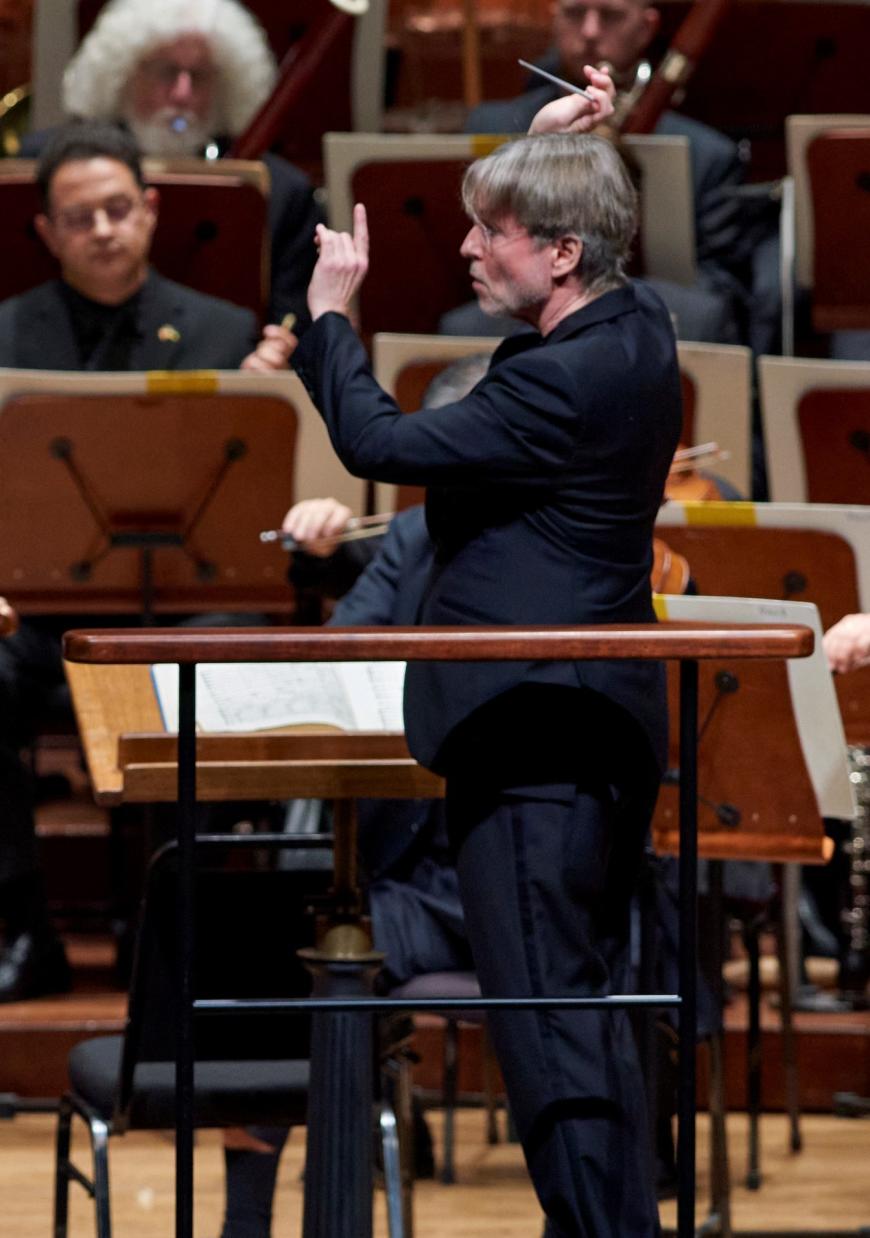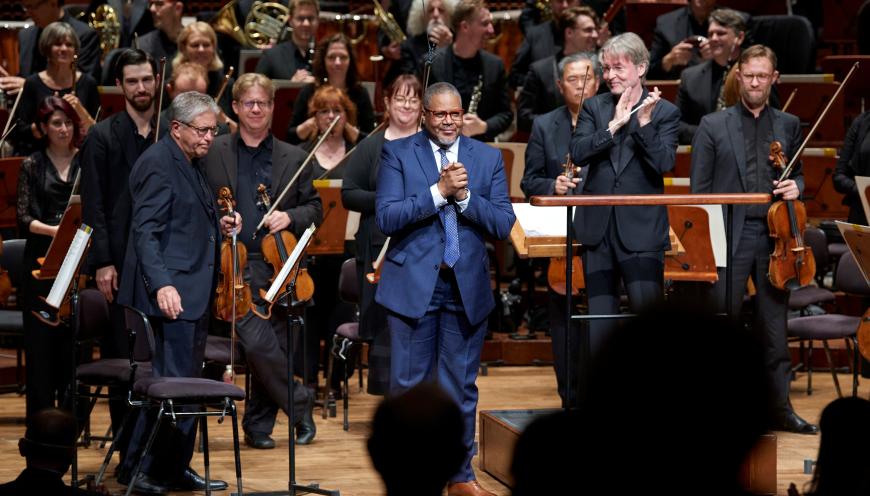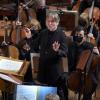
For the first subscription program of the San Francisco Symphony’s 2022–2023 season, audiences heard a double treat: an important commission and Music Director Esa-Pekka Salonen’s first (and magnificent) local performances of Mahler.
Gustav Mahler’s Symphony No. 2 in C Minor presents all sorts of musical challenges. The work runs close to 90 minutes, has immensely scaled outer movements flanking two conventionally scaled inner movements and the intense but tiny “Urlicht,” and is written for an enormous orchestra that nonetheless often needs to play with the character of a chamber orchestra.
Salonen’s approach emphasized Mahler’s large-scale thinking and the numerous thematic and rhythmic connections across the symphony. The orchestra’s explosive outbursts were all there — the air in Davies thrummed at the fierceness of the opening phrases — but what lingers most in this reviewer’s memory is the extraordinary grace of Salonen’s conducting and the play of musical lines against each other. However large or loud the forces playing at any time were, the orchestral sound was always transparent and held in equipoise.

Further, Salonen brought natural metric flexibility and contrast to every passage, particularly in the repeated phrases of the second and third movements. Closely observed dynamics drew the listener into the work and reinforced Mahler’s larger- and smaller-scale structures. Salonen’s composer’s ear brought out color contrasts, such as in the extensive plucked-string sections or between the alternating cellos and high strings in the second movement.
Mahler’s Second is, like so many of his symphonies, an overtly dramatic work. The texts of the fourth and fifth movements deal directly with humanity, spiritual danger, hope, and the possibility of redemption. Michelle DeYoung’s dark-toned, beautifully sustained mezzo-soprano ideally suited “Urlicht” (Primal light). She and Salonen together phrased the movement and its frequent metrical changes with the natural freedom of a lieder performance. Concertmaster Alexander Barantschik contributed a gorgeous solo.
It’s the long last movement that gives the symphony its nickname, “Resurrection,” from the title of a short poem by Friedrich Gottlieb Klopstock. Mahler himself contributed about half the movement’s text. The SF Symphony Chorus, prepared by Jenny Wong, produced a beautifully hushed, hooded sound in the grave opening of the choral section, though one might have wished for a clearer articulation of the text. Soprano Golda Schultz sang her lines with bright clarity and blended well with DeYoung during their duet. (You can hear Schultz in Jean Sibelius’s Luonnotar on the next SFS program.)
Mahler’s symphony closed with the entire orchestra ablaze in triumph. Special credit to the brass and winds for marvelous playing throughout a long evening and to timpanists Edward Stephan and Bryce Leafman for their great contributions to the forward momentum of the orchestra.
The program opened with the world premiere of Trevor Weston’s Push, the first fruit of the Emerging Black Composers Project, an initiative between the Symphony and the SF Conservatory of Music. At 55, Weston is widely commissioned and performed, so he isn’t exactly “emerging.” He has strong ties to the Bay Area, though: He received his doctorate in composition from UC Berkeley, studying with Olly Wilson and Andrew Imbrie.

Push, an energetic and colorfully orchestrated mini-symphony, is the kind of work that makes you want to hear more of Weston’s music. His spoken introduction called the first movement, “Cycles,” loud, but I’d call it pleasantly raucous in the outer sections, lyrical in the sweeter middle section. “In Memoriam (Michael Morgan),” a quiet, long-limbed elegy, remembered the late conductor of the Oakland Symphony, who died last year at only 63. Morgan was instrumental in creating the Emerging Black Composers Project and led the first selection committee, on which Salonen and conductor Edwin Outwater also served.
“City Quiet,” composed as an homage to Aaron Copland’s Quiet City, flows gently, with rustling strings and fluttering winds evocative of the night. “Beat Drop” revels in jazzy cross-rhythms and muted trumpets, then surprises you with a quiet close.
This brief work memorably held its own on a concert with the enormous Mahler, so we can hope to hear it again, along with larger-scale compositions by Weston.



